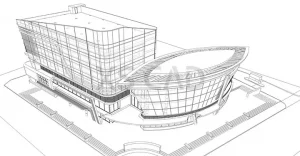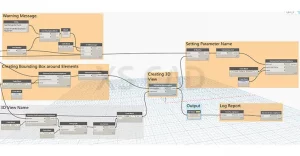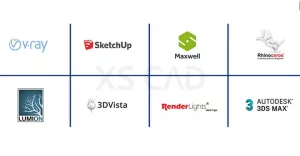Embracing Traceability with Digital Identity in Construction: Driving Transparency

Rallying through a pivotal moment, the construction design industry is undergoing a profound transformation driven by the integration of digital technologies and traceability systems. Historically known for procrastination in adopting cutting-edge practices, the sector is now poised to leverage innovative frameworks, such as the Digital Record (DR), to enhance accountability, compliance and efficiency throughout the lifecycle of construction projects, kickstarting a digital transformation in the construction industry.
Traceability – The Backbone of Modern Construction
Emerging as a critical component in construction project management, traceability ensures:
Traceability thus enhances project management and empowers stakeholders with reliable, up-to-date information to drive better decision-making.
Introducing the Digital Record (DR) Framework
At the heart of this transformation lies the Digital Record (DR) framework, a system designed to address the complexities of modern construction. It integrates three key components:
By adopting this framework, firms can streamline processes, practice procurement digitalisation, improve compliance and enhance quality assurance.
Challenges in Implementing Traceability
Despite its benefits, the path to achieving effective traceability through digitalisation in construction may throw up a few challenges:
Addressing these challenges requires robust digital solutions, stakeholder engagement and industry-wide collaboration.
Emerging Technologies Powering Traceability
Emerging construction technologies can help the industry overcome these challenges:
Future research must focus on refining the DR framework, addressing interoperability issues and fully harnessing the potential of these technologies.
Looking Ahead
As the construction industry evolves, collaboration and innovation will play crucial roles in addressing traceability challenges. By refining the Digital Record framework and incorporating stakeholder feedback, the industry can establish a standardised approach to traceability that aligns with regulatory requirements and practical needs and furthers construction workflow automation.
Role of BIM in Enhancing Traceability
Playing a vital role in advancing traceability in construction projects, Building Information Modelling (BIM) can help centralise and streamline project data using 3D modelling software. It provides detailed digital representations of projects, enabling professionals to predict material performance, estimate costs and update data in real time. This ensures that all stakeholders have access to accurate, actionable information for optimised resource planning.
Fostering seamless collaboration, BIM offers a consolidated project model with real-time updates. Contractors, subcontractors, project managers and architects can access the same model, enhancing communication and project efficiency.
As BIM provides precise digital records of a building’s components, including installation dates, warranty details and maintenance history, it simplifies building management.
In smart buildings, BIM combined with AI enables the analysis of sensor data for preventive maintenance and performance optimisation. It also helps construction companies refine future projects by learning from past builds. Emerging technologies, such as machine learning, integrated with BIM, can pave the way for design automation.
Key Benefits of Increased Traceability in Construction
Improved traceability can enhance construction project management solutions, as:
With a unified approach to traceability, stakeholders can create a safer, more transparent and sustainable built environment. The journey demands ongoing dialogue, innovative solutions for design-build concepts and continuous improvement, but the rewards—a more efficient and accountable construction industry—are well worth the effort.
Axium Global has valuable experience providing digital transformation and procurement digitalisation services for global construction design firms, using the latest design-build concepts and construction technologies. Our range of services for contractors and consultants includes using 3D modelling software, 2D CAD drawings and offering construction project management solutions. We create 3D visualisation, rendered images, 3D modelling and 3D walk-throughs by using Revit, 3ds Max, V-Ray, Adobe Photoshop and After Effects, Illustrator and BIM Collaboration Pro for cloud collaboration.






